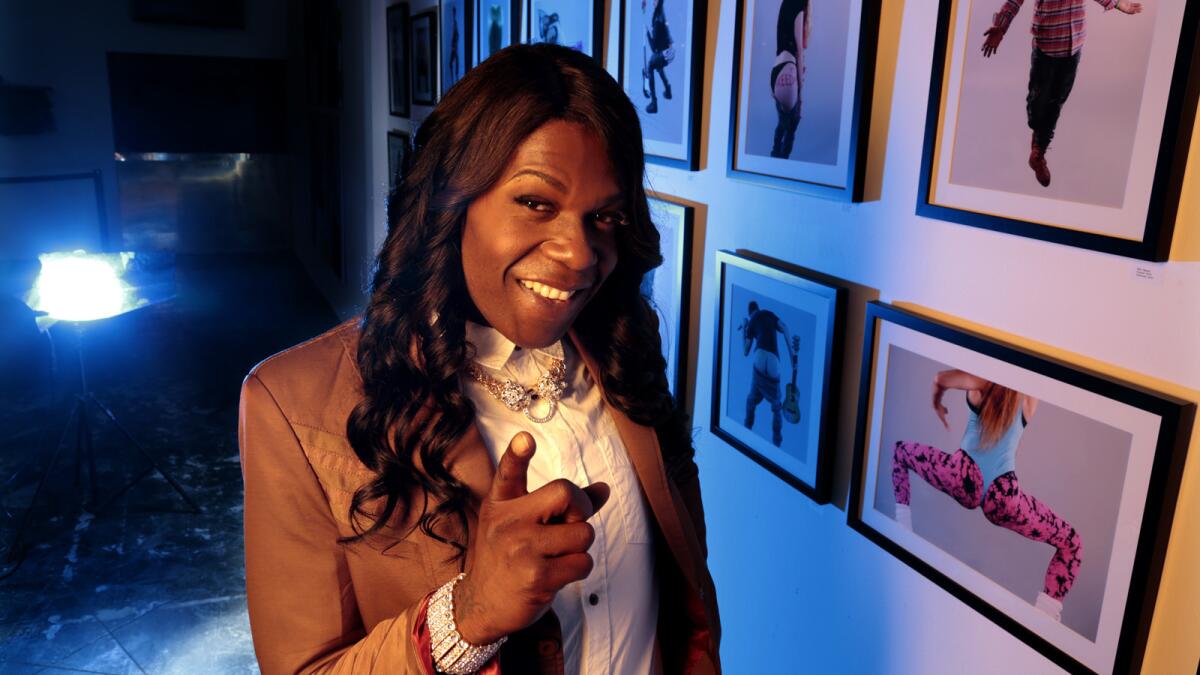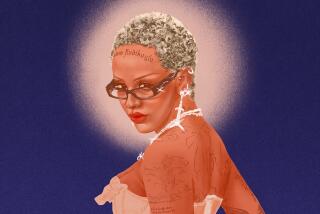Rapper Big Freedia’s career bounces in various directions

In the opening lines of the video for his 2014 single “Explode,” rapper Big Freedia outlines the precarious position he holds in the hip-hop industry.
“People get confused by if I am ‘he’ or ‘she’ … I am me. I am the ambassador representin’ for ‘New Orluns’ and for bounce music.”
Freedia, or Freddie Ross, as his friends and family know him, is an openly gay, gender-nonconforming artist. Standing 6 feet 3, hair coiling past a strong jaw line, he wears makeup and calls himself the Queen Diva. He’s a trailblazer when it comes to bounce music, a style popular in New Orleans that involves furious rump shaking and, often, heavy audience participation.
“When you come to a Big Freedia show, it’s a big party,” he says. “There’s no color, no size, no judging. It’s just a big open party for everybody to come and let their hair down and just enjoy bounce music.”
It’s the same perspective he uses in his own life, answering to both male and female pronouns.
One label he will welcome is that of author. In July, he’ll release his memoir, “Big Freedia: God Save the Queen Diva!” The book will detail Freedia’s upbringing in New Orleans, the history of bounce music and his internal battles of success and defeat.
He can also add “art curator” to his list of descriptors, as his photography collection, “Twerk of Art,” is currently viewable at World of Wonder in Hollywood. Just come prepared for a collection that hits below the belt.
The display features 21 photos of New Orleans dancers and their butts. It is open for the next month and is free, but by appointment only. The gallery also features a work of art by Jason Mercier, who created a likeness of Freedia from the materials in his trash.
Author, artist, trash recycler — these aren’t what one would expect from someone waving the hip-hop banner, but Big Freedia has blazed trails his whole career. His reality show, “Big Freedia: Queen of Bounce,” is in its third season as Fuse’s highest-rated series, and he holds the Guinness world record for getting the most people twerking simultaneously, at one of his performances.
The start of his career 15 years ago, however, didn’t foreshadow such success.
“It wasn’t so accepting when we first started,” the Louisiana native says about the industry when he began performing in 1998 behind his best friend, Katey Red, the first transgender bounce MC. “We got a lot of flak. They were just, like, ‘Oh, my God, they got this sissy rapping out of New Orleans.’”
Since then the industry, much like the nation, has become more receptive of gay artists. Rappers like Fly Young Red, Le1f and Cakes Da Killa, among others, have received varying levels of mainstream attention.
“The hip-hop industry is definitely changing,” Freedia says, adding that more work is still necessary. “We not going nowhere regardless, so y’all might as well get with the program.”
Bounce music is a highly regional style of hip-hop based out of New Orleans. Related to the Mardi Gras Indians and second-line brass bands of the jazz capital, it features lyrics that are often hypersexual and laced with call-and-response elements. The style is widely popular throughout the Deep South.
The “bounce” in bounce music refers to the accompanying dance style of jumping posteriors and nimble hips.
“It’s like a workout,” Freedia says. “You use your legs, your feet to make sure you’re grounded. You use your spine a lot to make your butt do all kinds of things. It’s a full body movement, and you just have to know what parts to work at what time.”
Those unfamiliar may call it twerking, but to Freedia it’s much more.
“ ‘Twerk’ is just one of the words in the vocabulary of bounce,” he says. “We twerk, wiggle, wobble, shake, bend over, bust open. We do it all.”
Communities had been bouncing long before Miley Cyrus twerked at the 2013 Video Music Awards, leading to a 2014 that became known as “the year of the booty,” thanks to celebratory songs from the likes of Jennifer Lopez and Meghan Trainor, among other cultural moments.
“The people in New Orleans were really upset,” Freedia says about the recognition Cyrus was getting for her dance moves. “I had to calm them down and let them know that sometimes other artists will do that and try to get the credit for things we’ve created and started, but it put bounce music in the limelight. It put another light on me.”
The Queen Diva met Cyrus at one of her concerts in New Orleans shortly after the now legendary VMA performance. Freedia didn’t come away a convert. “She still didn’t give the proper respect or whatever, but I’m still doing my thing. They know who holds it down.”
Big Freedia will headline an international tour starting Friday in San Francisco, with stops in Berlin, Amsterdam and London.
Fans can also expect new music this year, fresh off his first official studio album, “Just Be Free,” which is being hailed as one of the best electronic dance music albums of 2014 by Rolling Stone.
Having collaborated with the likes of RuPaul, he hopes that one day he’ll be able to “make something phenomenal” with Beyoncé, Solange or former “American Idol” star Fantasia.
Until then, he’ll dream slightly smaller, such as leading a showstopping performance at a major award show.
“I want to have their mouths dropping at the awards with me and 20 girls behind me shaking our [butts].”
--------------------
‘Twerk of Art’
What: Collection of 21 photographs of New Orleans’ best twerkers and Big Freedia-inspired artwork by Jason Mercier and Sham Ibrahim
Where: World of Wonder Gallery, 6650 Hollywood Blvd., L.A.
When: By appointment only
Cost: Free
Info: https://www.worldofwonder.net
More to Read
The biggest entertainment stories
Get our big stories about Hollywood, film, television, music, arts, culture and more right in your inbox as soon as they publish.
You may occasionally receive promotional content from the Los Angeles Times.







